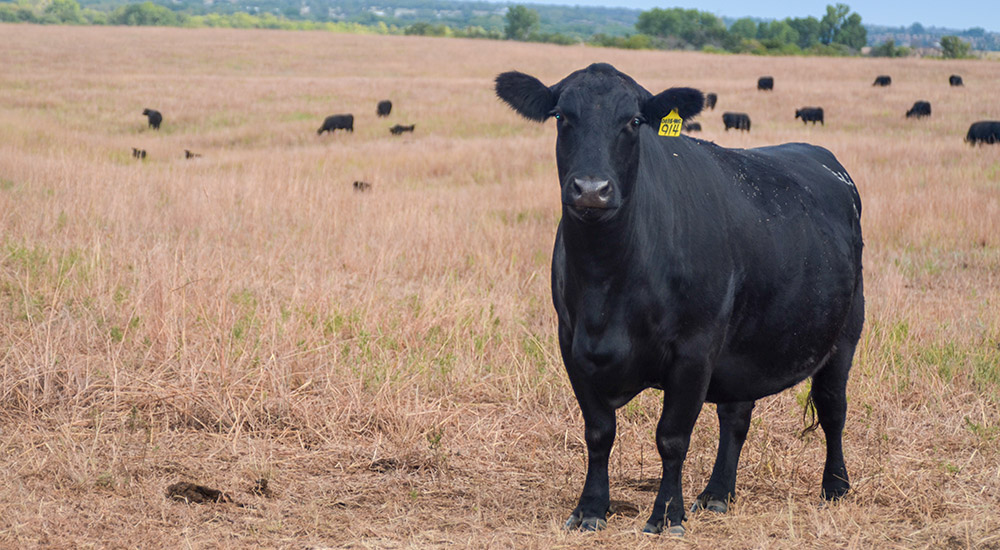
Over the decades, U.S. farmers and ranchers have significantly reduced soil carbon levels in farm and rangeland. Senior Farm and Ranch Broadcaster, Ron Hays, is talking with Jimmy Emmons, who is a rancher, farmer, and Oklahoma Conservation Commission’s Soil Health Mentoring Coordinator, about the value of improving soil carbon levels.
“Most of the prairie region from here to the north was somewhere between seven and 14 percent soil organic matter, originally,” Emmons said. “Most of our country here in Oklahoma is less than one percent.”
Every percent of soil organic matter can hold around 20,000 gallons of water, Emmons said, depending on the soil.
“We see a lot of ponding, terraces full of water,” Emmons said.
Many producers think their water is ponding because they have received good rains, Emmons said, but in most cases, it is because their soil is not allowing that water to infiltrate. By practicing good stewardship such as minimizing tillage, grazing management, and more, Emmons said, producers can help their soil rebound and begin putting more carbon back into the ground.
“Once you really get a full system in place and really manage that, you can do a lot in three to five years,” Emmons said.
After over ten years of putting effort into increasing carbon levels in his soils, Emmons said he has reached eight to 12 inches per hour of water infiltration. In 2010, Emmons said his water infiltration was measured to be half an inch per hour.
If the entire state of Oklahoma participated in better soil stewardship, Emmons said, a lot could be gained when big rainfall events come around. Water would be better stored, he added, and aquifers and ponds would be refilled with clean water rather than silt, chemicals, and fertilizer.
“That is the thing we have really got to work on and understand how that system’s approach really works,” Emmons said.
Originally, Emmons said the prairies consisted of many different animals, such as bison, deer, elk, and more species continuously moving and grazing. These species would come through and move on, giving that ground a long rest period, rather than grazing in the same spot until it was bare.
“Rest period is very important for multiple things,” Emmons said. “First of all, when you bite off grass- forage- the roots recede with the top growth, so you have fewer roots to be working in the ground for you, and you also have less canopy to be absorbing sunlight and photosynthesis. As you eat that off, you want to give that time to rebound and regrow.”
The Beef Buzz is a regular feature heard on radio stations around the region on the Radio Oklahoma Ag Network and is a regular audio feature found on this website as well. Click on the LISTEN BAR for today’s show and check out our archives for older Beef Buzz shows covering the gamut of the beef cattle industry today.


















